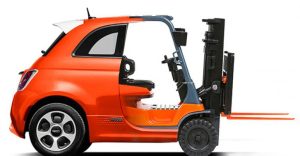5 Forklift Safety Elements – Part 3 (Know The Machinery & Rules)
Know the machinery – and the rules
Although lift trucks and personal vehicles share some similarities, they ultimately are quite different.
Among the differences:
- Open structure; the driver is not completely enclosed
- Weights ranging from 9,000 to 30,000 pounds, with rough-terrain lift trucks at the heavier end
- Traveling speeds of less than 20 mph, closer to a walking pace
- Three-point suspension
- More prone to tipping overloaded or not – and varying stability
- Tighter turning radius for operating in tight spots
Operators should always wear seat belts. Neglecting to do so can cause an operator to be ejected from the forklift’s protective cage if the truck turns over, resulting in a possible serious injury or fatality.
An operator always should be aware of his or her surroundings on the job site, as the load or environment may obstruct visibility.
It’s vital that drivers are aware of and making eye contact with, pedestrians or other workers during operation. OSHA best practices for maintaining visibility include:
- Keep a clear view.
- Always look in the direction of travel.
- Use spotters or aids such as rear-view mirrors to boost visibility.
- Use headlights if working at night, outdoors or in areas in which additional lighting would improve visibility. OSHA requires forklifts to be equipped with headlights when general lighting is less than 2 lumens per square foot.
Stay tuned for Part – 4 “Understanding the stability triangle” coming next week.
Call Now to speak with a UniFirst First Aid + Safety Training Specialist
Click Here for Safety Training Courses
Click Here for webChat
If you liked this post be sure to follow us:
Source: https://www.safetyandhealthmagazine.com/articles/16138-elements-of-forklift-safety

